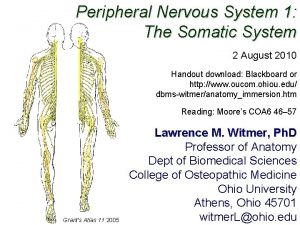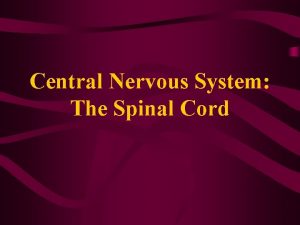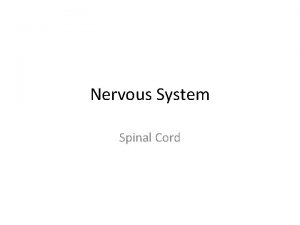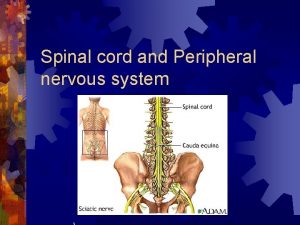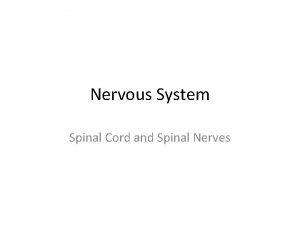1 Chapter 12 Central Nervous System Spinal Cord







- Slides: 7

1 Chapter 12 Central Nervous System Spinal Cord

2 Spinal cord dorsal view figure 12. 29, pg. 467

3 Spinal cord

4 Gray matter of spinal cord • Dorsal horns – associated with afferent, sensory nerve impulses from receptors, C 1 -L 5 neuron cell bodies bundled in dorsal root ganglion • Ventral horns – associated with efferent, motor nerve impulses to effectors, C 1 -L 5 neuron cell bodies are in gray matter of ventral horn • Lateral horns – only in in T 1 -T 12 region

5 Spinal cord • Central nervous system consist of the brain and the spinal cord. Afferent peripheral (? )nerves bring nerve impulses from the receptors (? ) to the spinal cord. Afferent nerve tracts (? ) in the spinal cord take the nerve impulses to the brain Bundles of nerve fibers (axons) in the peripheral nerve system are called nerves. Bundles of nerve fibers in the CNS are called tracts

6 Spinal Cord • Nerves and tracts are bundles of axons • Somewhere near one end of the nerve there will be the cell bodies of the nerve. • Often these cell bodies will also be bundled together. – If the bundles of cell bodies are in the PNS they’re called ganglions – If the bundles of cell bodies are in the CNS they’re called nuclei. (center of)

7 Spinal cord • Motor neurons are efferent - descend from the brain - synapse and go to the spinal cord, synapse and then out to the effectors (muscles or glands) • Sensory neurons are afferent, go from the receptor to the spinal cord synapse, ascend up the cord and synapse at the brain
